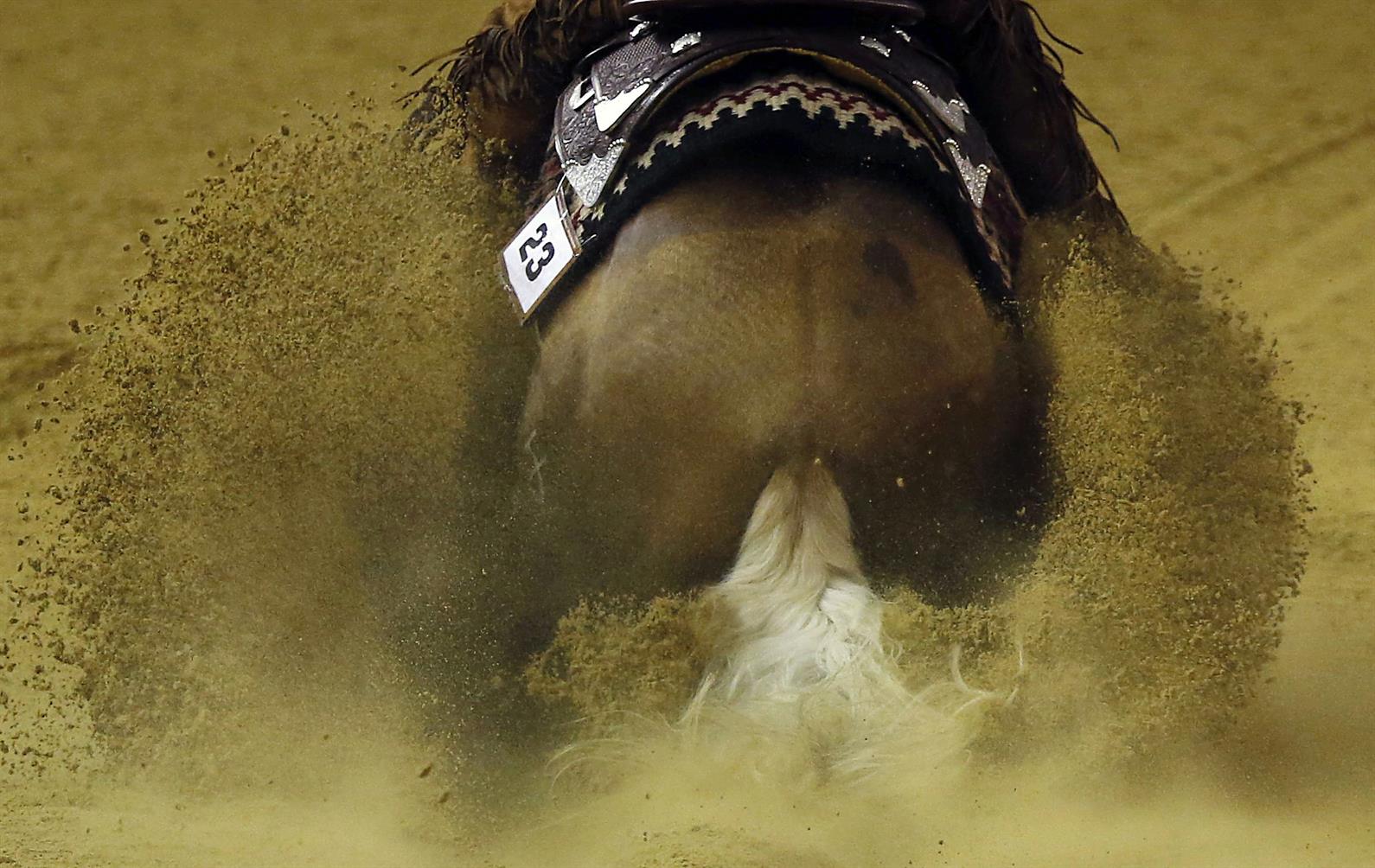As young reining athletes prepare for the FEI Reining World Championships for Juniors and Young Riders July 9-13 in Givrins, Switzerland, the United States Equestrian Federation and USA Reining are teaming up to build a solid pathway to international competition for young reining athletes in the U.S. That means more opportunities for young riders and their horses throughout the nation, says Bryn Wells, the USEF’s Director of Reining and Eventing Programs.

“We’re working with USA Reining to get USEF and USA Reining joint classes at more National Reining Horse Association competitions,” Wells explained. “We’re using the USEF Competition Lite model so it’s an easier introduction—it’s not as expensive or labor-intensive for organizers, and it gives kids their first introduction to a USEF competition. It offers another avenue for youth to show and compete their horses, and it’s a way to show competitors some of what USEF has to offer.
“We work with youth on interscholastic and high-school teams, as well as young adults who are a part of the Intercollegiate Horse Shows Association and the National Collegiate Equestrian Association, and we have a Lettering Program and can help provide support in many areas. USEF has more to offer than just a class to show in,” Wells continued, noting that plans call for adding scholarships to USEF national reining championships in 2020, too. “We’re trying to get out to the grassroots level to make people aware that we’re more than just the FEI level and the FEI World Equestrian Games™ teams for reining.”
The reining pathway currently under development provides a natural progression and gradual exposure to the setting and experience of international and team competition. It starts with USEF/USA Reining classes at local shows, then progresses to fully USEF-licensed competitions, and then on to Fédération Équestre Internationale competition. Along the way, the new reining pathway eventually will also feature educational opportunities, such as clinics with riders from past gold medal-winning reining teams and practice FEI classes that introduce young riders to the ins and outs of international competition protocol.
“So you’d go from Competition Lite to a USEF competition on to an FEI competition,” Wells explained. “Along the way, we would have the clinics during the Competition Lite and USEF competitions to show the kids the differences at FEI-level competition so they can start to work that into their program, understand the rules, and better prepare their horses.”
The pathway also will incorporate scoreboard team competition at some of events, too, to introduce competitors to a team atmosphere.
“There’s added pressure when your score counts toward a team score,” Wells explained. “That’s something you don’t see a lot of at horse shows, but it can give kids a taste of the team experience before they compete internationally. Team competitions are something we are looking to incorporate into national championships and into other events throughout the year. We’d like to build the championships up again into a team competition similar to what NAJYRC used to be, so they feel that pressure of the team aspect.
“Equestrian is such an individual sport,” she said. “But when you go in there as the anchor for a team, you feel added pressure—team members talk about what a different feeling that is. So it’s something we want to help riders get exposed to and get used to, especially when they’re young. We’re hoping to make more opportunities and experiences available for competitors aged 14 to 21, so they have more experience with it before they go on to international competition.”
There are young equestrians with international potential all around the country, and USEF is committed to identifying and developing them.
“We also are working on ways to identify juniors and young riders that we think in the future could be part of a senior team and really work with them to get them to that next level, to get them on an international team and get them that experience,” said Wells. “We’re hoping to also include children’s classes for kids 13 and under in the future. The idea is to work with those youth as they go up through the age groups all the way to the Under 25s, so that when they hit the senior realm, the WEG is not the first time they’re seeing team competition.
“We’ve had some kids that have amazing horses who have taken them a long way but who might not be an elite-level horse or might not be the right age,” she added. “We have a really good network of people overseas and in the States, including trainers and past team riders, who really want to help. They are helping to identify owners who have horses available to give these youth the opportunity to compete. We do notice those riders, and we try to help them get to the next level of international competition, if that’s something they want to do. We are working with youth who maybe don’t have all the elements yet but who have the natural talent and work ethic.”
Even if a young equestrian doesn’t end up going into international competition, the new reining pathway will open up new opportunities and experiences for them and their horse.
“If we’re able to get scholarships at national championships, it will be an added bonus to competing for the national title,” said Wells.
Find out more at US Equestrian’s reining webpage and at USA Reining, where you can also find a list of competitions, or email Bryn Wells, US Equestrian’s Director of Reining and Eventing Programs, at bwells@usef.org.


